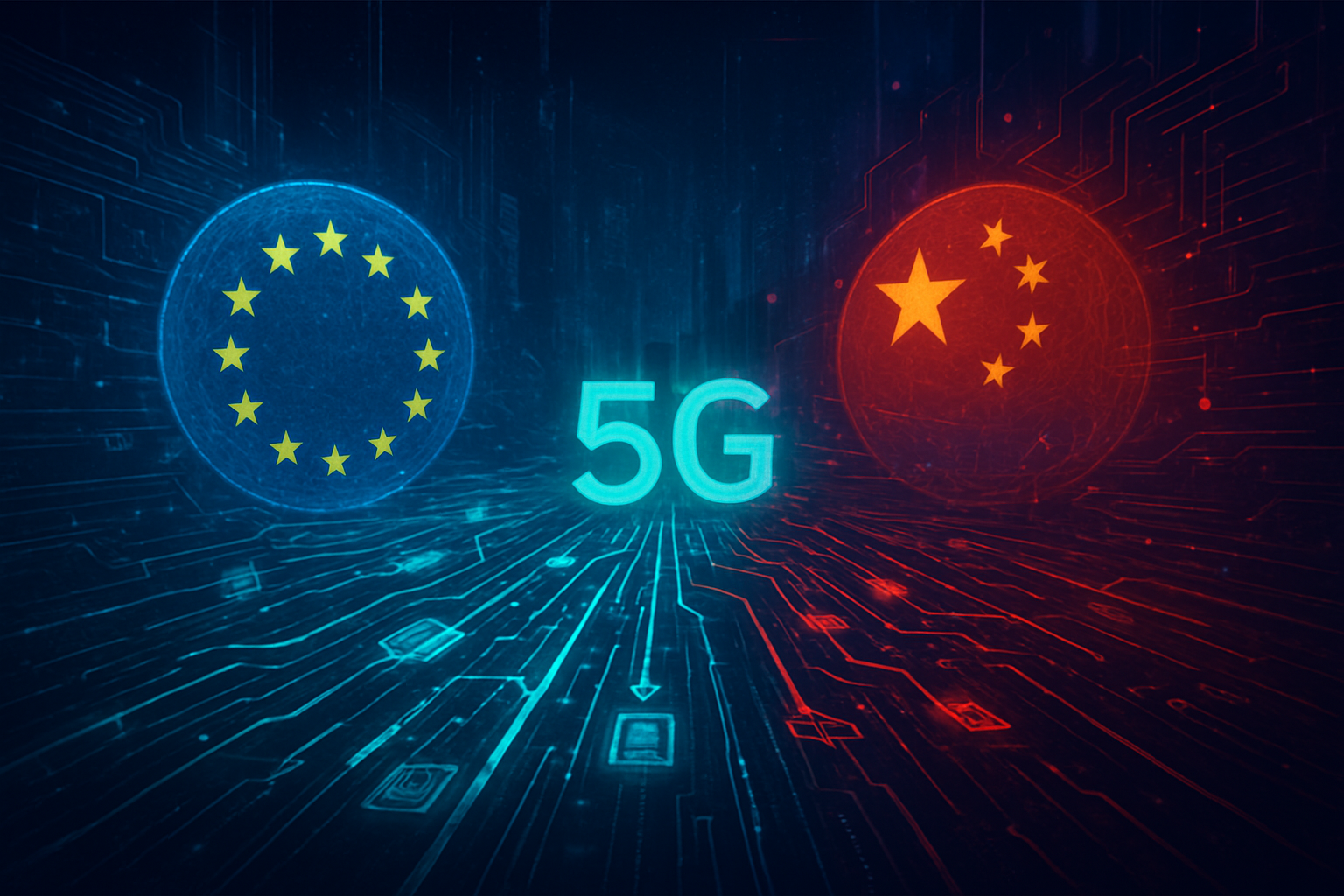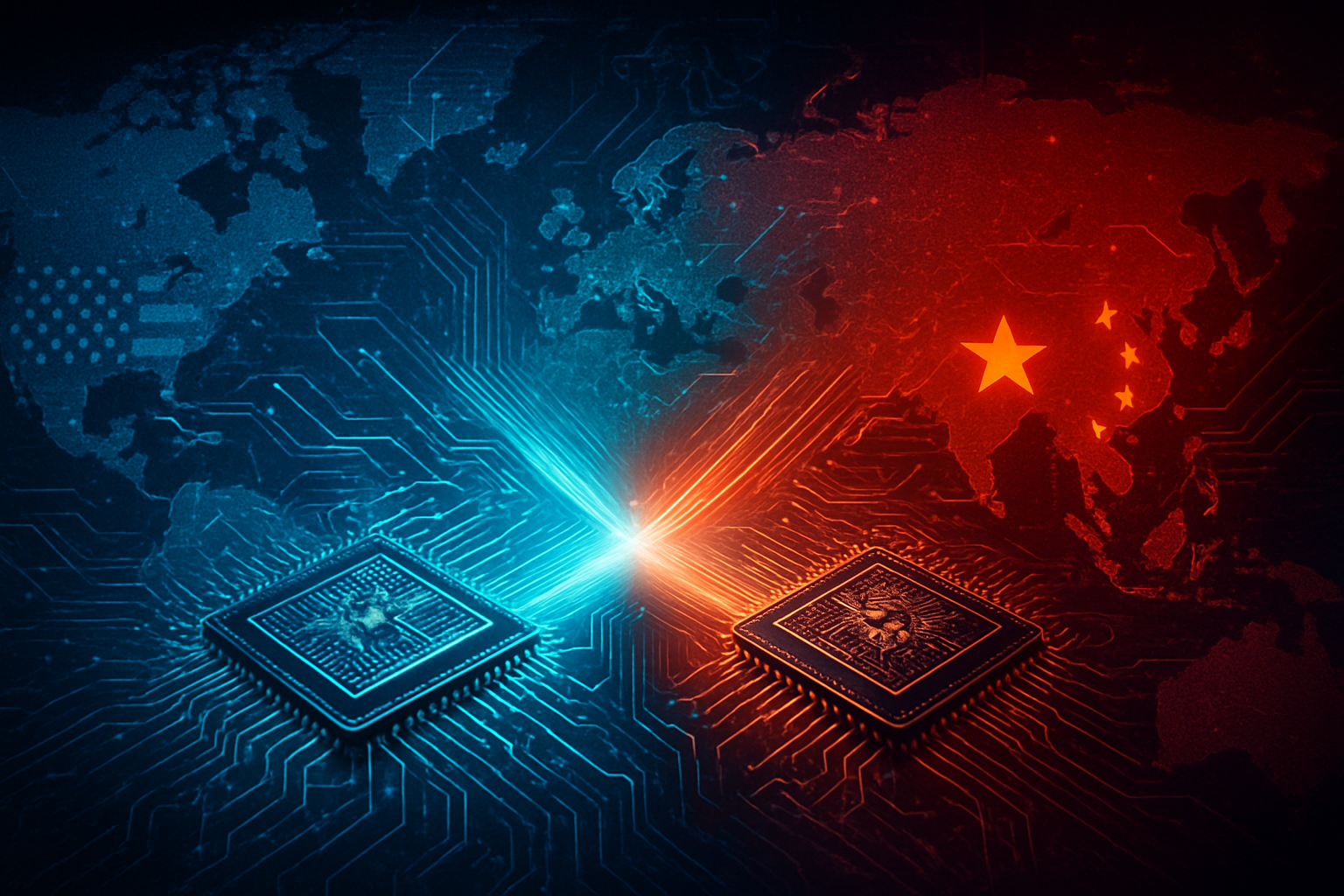The global semiconductor industry, a foundational pillar of modern technology and the economy, has been profoundly tested in recent years. From the widespread factory shutdowns and logistical nightmares of the COVID-19 pandemic to escalating geopolitical tensions and natural disasters, the fragility of the traditionally lean and globally integrated chip supply chain has been starkly exposed. These events have not only caused significant economic losses, impacting industries from automotive to consumer electronics, but have also underscored the immediate and critical need for a robust and adaptable supply chain to ensure stability, foster innovation, and safeguard national security.
The immediate significance lies in semiconductors being the essential building blocks for virtually all electronic devices and advanced systems, including the sophisticated artificial intelligence (AI) systems that are increasingly driving technological progress. Disruptions in their supply can cripple numerous industries, highlighting that a stable and predictable supply is vital for global economic health and national competitiveness. Geopolitical competition has transformed critical technologies like semiconductors into instruments of national power, making a secure supply a strategic imperative.
The Intricacies of Chip Production and Evolving Resilience Strategies
The semiconductor supply chain's inherent susceptibility to disruption stems from several key factors, primarily its extreme geographic concentration. A staggering 92% of the world's most advanced logic chips are produced in Taiwan, primarily by Taiwan Semiconductor Manufacturing Company (TSMC) (NYSE: TSM). This centralization makes the global supply highly vulnerable to geopolitical instability, trade disputes, and natural disasters. The complexity of manufacturing further exacerbates this fragility; producing a single semiconductor can involve over a thousand intricate process steps, taking several months from wafer fabrication to assembly, testing, and packaging (ATP). This lengthy and precise timeline means the supply chain cannot rapidly adjust to sudden changes in demand, leading to significant delays and bottlenecks.
Adding to the complexity is the reliance on a limited number of key suppliers for critical components, manufacturing equipment (like ASML Holding N.V. (NASDAQ: ASML) for EUV lithography), and specialized raw materials. This creates bottlenecks and increases vulnerability if any sole-source provider faces issues. Historically, the industry optimized for "just-in-time" delivery and cost efficiency, leading to a highly globalized but interdependent system. However, current approaches mark a significant departure, shifting from pure efficiency to resilience, acknowledging that the cost of fragility outweighs the investment in robustness.
This new paradigm emphasizes diversification and regionalization, with governments globally, including the U.S. (through the CHIPS and Science Act) and the European Union (with the European Chips Act), offering substantial incentives to encourage domestic and regional production. This aims to create a network of regional hubs rather than a single global assembly line. Furthermore, there's a strong push to enhance end-to-end visibility through AI-powered demand forecasting, digital twins, and real-time inventory tracking. Strategic buffer management is replacing strict "just-in-time" models, and continuous investment in R&D, workforce development, and collaborative ecosystems are becoming central tenets of resilience strategies.
Initial reactions from the AI research community and industry experts are characterized by a mix of urgency and opportunity. There's widespread recognition of the critical need for resilience, especially given the escalating demand for chips driven by the "AI Supercycle." Experts note the significant impact of geopolitics, trade policy, and AI-driven investment in reshaping supply chain resilience. While challenges like industry cyclicality, potential supply-demand imbalances, and workforce gaps persist, the consensus is that strengthening the semiconductor supply chain is imperative for future technological progress.
AI Companies, Tech Giants, and Startups: Navigating the New Chip Landscape
A robust and adaptable semiconductor supply chain profoundly impacts AI companies, tech giants, and startups, shaping their operational capabilities, competitive landscapes, and long-term strategic advantages. For AI companies and major AI labs, a stable and diverse supply chain ensures consistent access to high-performance GPUs and AI-specific processors—essential for training and running large-scale AI models. This stability alleviates chronic chip shortages that have historically slowed development cycles and can potentially reduce the exorbitant costs of acquiring advanced hardware. Improved access directly accelerates the development and deployment of sophisticated AI systems, allowing for faster innovation and market penetration.
Tech giants, particularly hyperscalers like Apple Inc. (NASDAQ: AAPL), Samsung Electronics Co., Ltd. (KRX: 005930), Alphabet Inc. (NASDAQ: GOOGL), Meta Platforms, Inc. (NASDAQ: META), and Microsoft Corporation (NASDAQ: MSFT), are heavily invested in custom silicon for their AI workloads and cloud services. A resilient supply chain enables them to gain greater control over their AI infrastructure, reducing dependency on external suppliers and optimizing performance and power efficiency for their specific needs. This trend toward vertical integration allows them to differentiate their offerings and secure a competitive edge. Companies like Intel Corporation (NASDAQ: INTC), with its IDM 2.0 strategy, and leading foundries like TSMC (NYSE: TSM) and Samsung are at the forefront, expanding into new regions with government support.
For startups, especially those in AI hardware or Edge AI, an expanded and resilient manufacturing capacity democratizes access to advanced chips. Historically, these components were expensive and difficult to source for smaller entities. A more accessible supply chain lowers entry barriers, fostering innovation in specialized inference hardware and energy-efficient chips. Startups can also find niches in developing AI tools for chip design and optimization, contributing to the broader semiconductor ecosystem. However, they often face higher capital expenditure challenges compared to established players. The competitive implications include an intensified "silicon arms race," vertical integration by tech giants, and the emergence of regional dominance and strategic alliances as nations vie for technological sovereignty.
Potential disruptions, even with resilience efforts, remain a concern, including ongoing geopolitical tensions, the lingering geographic concentration of advanced manufacturing, and raw material constraints. However, the strategic advantages are compelling: enhanced stability, reduced risk exposure, accelerated innovation, greater supply chain visibility, and technological sovereignty. By diversifying suppliers, investing in regional manufacturing, and leveraging AI for optimization, companies can build a more predictable and agile supply chain, fostering long-term growth and competitiveness in the AI era.
Broader Implications: AI's Hardware Bedrock and Geopolitical Chessboard
The resilience of the global semiconductor supply chain has transcended a mere industry concern, emerging as a critical strategic imperative that influences national security, economic stability, and the very trajectory of artificial intelligence development. Semiconductors are foundational to modern defense systems, critical infrastructure, and advanced computing. Control over advanced chip manufacturing is increasingly seen as a strategic asset, impacting a nation's economic security and its capacity for technological leadership. The staggering $210 billion loss experienced by the automotive industry in 2021 due to chip shortages vividly illustrates the immense economic cost of supply chain fragility.
This issue fits into the broader AI landscape as its foundational hardware bedrock. The current "AI supercycle" is characterized by an insatiable demand for advanced AI-specific processors, such as GPUs and High-Bandwidth Memory (HBM), crucial for training large language models (LLMs) and other complex AI systems. AI's explosive growth is projected to increase demand for AI chips tenfold between 2023 and 2033, reshaping the semiconductor market. Specialized hardware, often designed with AI itself, is driving breakthroughs, and there's a symbiotic relationship where AI demands advanced chips while simultaneously being leveraged to optimize chip design, manufacturing, and supply chain management.
The impacts of supply chain vulnerabilities are severe, including crippled AI innovation, delayed development, and increased costs that disproportionately affect startups. The drive for regional self-sufficiency, while enhancing resilience, could also lead to a more fragmented global technological ecosystem and potential trade wars. Key concerns include the continued geographic concentration (75% of global manufacturing, especially for advanced chips, in East Asia), monopolies in specialized equipment (e.g., ASML (NASDAQ: ASML) for EUV lithography), and raw material constraints. The lengthy and capital-intensive production cycles, coupled with workforce shortages, further complicate efforts.
Compared to previous AI milestones, the current relationship between AI and semiconductor supply chain resilience represents a more profound and pervasive shift. Earlier AI eras were often software-focused or adapted to general-purpose processors. Today, specialized hardware innovation is actively driving the next wave of AI breakthroughs, pushing beyond traditional limits. The scale of demand for AI chips is unprecedented, exerting immense global supply chain pressure and triggering multi-billion dollar government initiatives (like the CHIPS Acts) specifically aimed at securing foundational hardware. This elevates semiconductors from an industrial component to a critical strategic asset, making resilience a cornerstone of future technological progress and global stability.
The Horizon: Anticipated Developments and Persistent Challenges
The semiconductor supply chain is poised for a significant transformation, driven by ongoing investments and strategic shifts. In the near term, we can expect continued unprecedented investments in new fabrication plants (fabs) across the U.S. and Europe, fueled by initiatives like the U.S. CHIPS for America Act, which has already spurred over $600 billion in private investments. This will lead to further diversification of suppliers and manufacturing footprints, with enhanced end-to-end visibility achieved through AI and data analytics for real-time tracking and predictive maintenance. Strategic inventory management will also become more prevalent, moving away from purely "just-in-time" models.
Long-term, the supply chain is anticipated to evolve into a more distributed and adaptable ecosystem, characterized by a network of regional hubs rather than a single global assembly line. The global semiconductor market is forecast to exceed US$1 trillion by 2030, with average annual demand growth of 6-8% driven by the pervasive integration of technology. The U.S. is projected to significantly increase its share of global fab capacity, including leading-edge fabrication, DRAM memory, and advanced packaging. Additionally, Assembly, Test, and Packaging (ATP) capacity is expected to diversify from its current concentration in East Asia to Southeast Asia, Latin America, and Eastern Europe. A growing focus on sustainability, including energy-efficient fabs and reduced water usage, will also shape future developments.
A more resilient supply chain will enable and accelerate advancements in Artificial Intelligence and Machine Learning (AI/ML), powering faster, more efficient chips for data centers and high-end cloud computing. Autonomous driving, electric vehicles, industrial automation, IoT, 5G/6G communication systems, medical equipment, and clean technologies will all benefit from stable chip supplies. However, challenges persist, including ongoing geopolitical tensions, the lingering geographic concentration of crucial components, and the inherent lack of transparency in the complex supply chain. Workforce shortages and the immense capital costs of new fabs also remain significant hurdles.
Experts predict continued strong growth, with the semiconductor market reaching a trillion-dollar valuation. They anticipate meaningful shifts in the global distribution of chip-making capacity, with the U.S., Europe, and Japan increasing their share. While market normalization and inventory rebalancing are expected in early 2025, experts warn that this "new normal" will involve rolling periods of constraint for specific node sizes. Government policies will continue to be key drivers, fostering domestic manufacturing and R&D. Increased international collaboration and continuous innovation in manufacturing and materials are also expected to shape the future, with emerging markets like India playing a growing role in strengthening the global supply chain.
Concluding Thoughts: A New Era for AI and Global Stability
The journey toward a robust and adaptable semiconductor supply chain has been one of the most defining narratives in technology over the past few years. The lessons learned from pandemic-induced disruptions, geopolitical tensions, and natural disasters underscore the critical imperative for diversification, regionalization, and the astute integration of AI into supply chain management. These efforts are not merely operational improvements but foundational shifts aimed at safeguarding national security, ensuring economic stability, and most importantly, fueling the relentless advancement of artificial intelligence.
In the annals of AI history, the current drive for semiconductor resilience marks a pivotal moment. Unlike past AI winters where software often outpaced hardware, today's "AI supercycle" is fundamentally hardware-driven, with specialized chips like GPUs and custom AI accelerators being the indispensable engines of progress. The concentration of advanced manufacturing capabilities has become a strategic bottleneck, intensifying geopolitical competition and transforming semiconductors into a critical strategic asset. This era is characterized by an unprecedented scale of demand for AI chips and multi-billion dollar government initiatives, fundamentally reshaping the industry and its symbiotic relationship with AI.
Looking long-term, the industry is moving towards a more regionalized ecosystem, albeit potentially with higher costs due to dispersed production. Government policies will continue to be central drivers of investment and R&D, fostering domestic capabilities and shaping international collaborations. The next few weeks and months will be crucial to watch for continued massive investments in new fabs, the evolving landscape of trade policies and export controls, and how major tech companies like Intel (NASDAQ: INTC), NVIDIA Corporation (NASDAQ: NVDA), and TSMC (NYSE: TSM) adapt their global strategies. The explosive, AI-driven demand will continue to stress the supply chain, particularly for next-generation chips, necessitating ongoing vigilance against workforce shortages, infrastructure costs, and the inherent cyclicality of the semiconductor market. The pursuit of resilience is a continuous journey, vital for the future of AI and the global digital economy.
This content is intended for informational purposes only and represents analysis of current AI developments.
TokenRing AI delivers enterprise-grade solutions for multi-agent AI workflow orchestration, AI-powered development tools, and seamless remote collaboration platforms.
For more information, visit https://www.tokenring.ai/.









